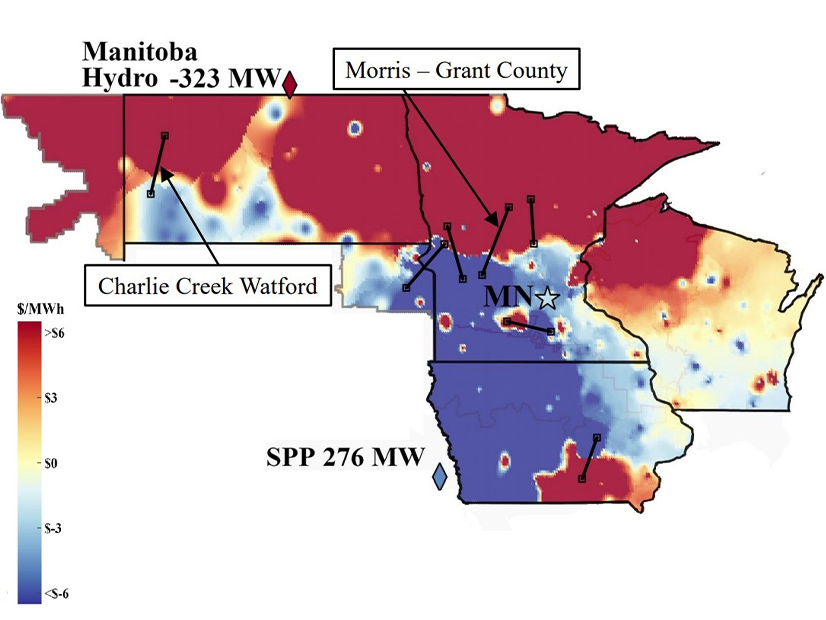
ORLANDO, Fla. — MISO and its Independent Market Monitor agree that legal action is likely on the horizon concerning the RTO’s payments to SPP for a market-to-market flowgate.
Monitor David Patton said congestion costs remain high at nearly $600 million over the fall in MISO. At a Dec. 5 Markets Committee of the MISO Board of Directors, he singled out the 230-kV Charlie Creek-Watford line, a market-to-market flowgate with SPP, as a major source of congestion.
The line recently began delivering power to 220 MW in new load from a cryptocurrency mining operation in northwest North Dakota. Patton said Charlie Creek-Watford’s status as an M2M constraint should be revoked because MISO can offer SPP little relief.
Patton also suggested MISO’s millions of dollars in firm flow entitlement payments to SPP involving the constraint might be improperly calculated by SPP. He added SPP has had challenges in modeling use of the line.
“This is a mess,” Patton said. “This is really a bad scenario for MISO customers … I think there’s a good chance we head to litigation at FERC because we can’t keep these payments up.”
Patton said the line accounts for most of the current funding shortfalls in MISO’s financial transmission rights market.
“This one is going to be a legal issue in how we interpret the joint operating area, and we just need to sit down with SPP to work it out,” MISO CEO John Bear said.
MISO Executive Director of Market Operations J.T. Smith said new load was allowed to be activated in an already constrained SPP load pocket. Smith said while transmission upgrades are planned for the area, they’re not yet in place to help the situation. The load pocket is served by several other lines in addition to the line in question.
SPP maintains it and MISO have “robust coordination procedures in place to ensure the market-to-market congestion management processes are working as intended” and in accordance with the RTOs’ joint operating agreement.
“Over the last few months, the RTOs have extensively discussed the congestion issues associated with the Charlie Creek-Watford market-to-market flowgate that is being impacted by the operation of both markets,” SPP spokesperson Derek Wingfield said in an emailed statement to RTO Insider.
Wingfield said if SPP and MISO are unable to reach a solution through informal discussion, SPP is still optimistic that it and MISO will be able to leverage the formal dispute resolution procedures contained in their JOA. SPP is hopeful for a “mutually agreeable outcome prior to this becoming a legal matter at FERC,” Wingfield said.

